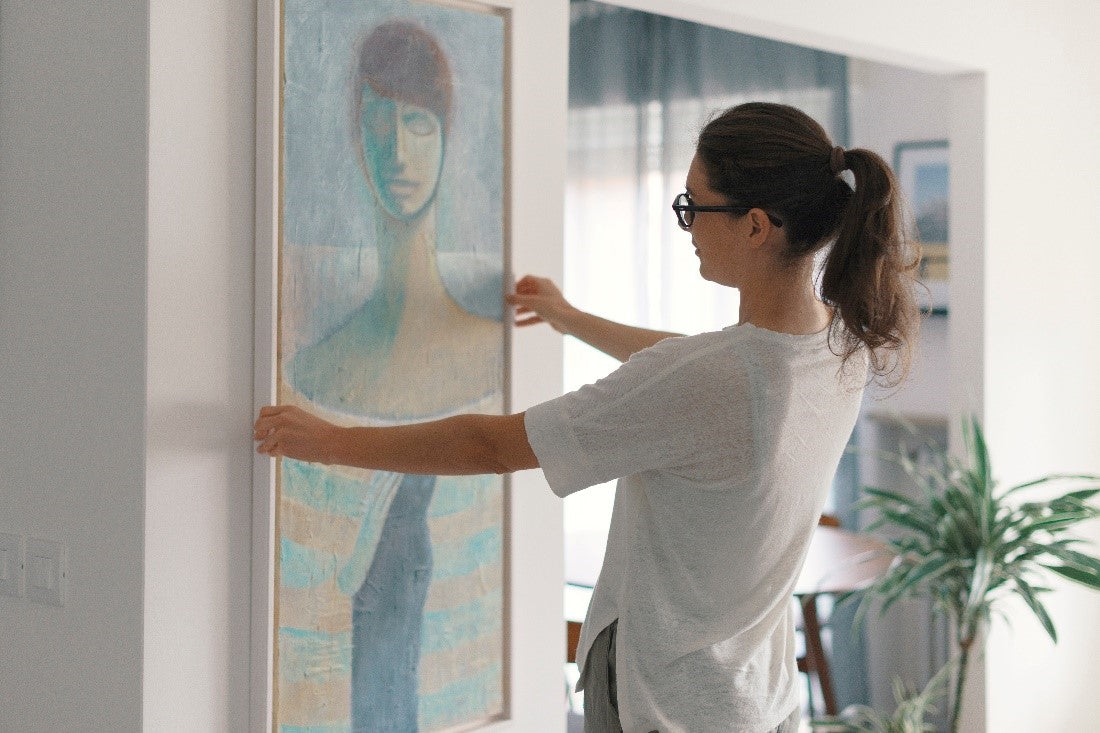When homeowners first turn their gaze towards drafting a new design for their interior, they often fly straight to focussing on the furnishings, overlooking the walls. The walls might receive a new splash of colour every now and then, but mostly, they’re neglected.
But relegating the design of your walls to the side-lines is a habit you want to avoid. Every room cries out for a focal point, and if Nate Burkus said that ‘your home should tell the story of who you are’, you want guests leaving with an impression of your personal tastes and style.
And so, without further ado, we present to you the way to achieve this: wall art!
A canvas print or framed print can be the statement décor your room was missing, but if the size doesn’t fit right, something will feel off. While empty wall space can be used as a crucial design element to enhance your décor, furniture pieces create natural breaks in a wall and present empty wall spaces that may be ideal for pictures.
A good tip is to examine the shapes and patterns the furnishings create around the empty wall space. Decide whether the space should be filled or if it would be better left empty. You want your wall art to draw the eye and pull the space together. A picture should add depth and warmth to your design, while being able to slip into the rest of the room seamlessly, as though it had always been there.
Reading the Room
Before you commit to purchasing that beautiful canvas or framed print, first gauge how it will look in your space and what size would fit best. A great way to help you visualise this is by outlining different potential dimensions with painter’s tape, sticky notes, or paper. You can then take a step back and take it all in. We also suggest you take some photos with your phone while you’re at it too. Does a large square canvas print look best or does a wide panoramic canvas suit the room better? Here’s your chance to adjust, try different size outlines and compare them until you find your favourite one.
General sizing rules:
- Wall art should take up 60%-75% of the available wall space. Start by measuring the width and height of your wall and then multiply them both by 0.60 and 0.75. This will give you the range of canvas print sizes that will suit the space. For example: if you have a blank wall that is 9 feet tall and 5 feet wide, multiply both 9 and 5 by 0.6 and 0.75. The ideal height of the canvas would then be between 5.4 to 6.75 and the ideal width would be 3 feet and 3.75 feet.
- When hanging wall art over furniture, such as a bed, a fireplace, or a couch, it should be between 2/3 to ¾ of the width of the furniture.
In general, bigger is always better. A small canvas won’t fill a big space and a big canvas print will create a beautiful focal point. As you saw in the sizing rules, your wall art should take up a large portion of an empty wall and be large relative to the furniture as well. If you have smaller pieces, don’t fret. You can hang them in a smaller area, place them side by side, or you can group them together to create an eye-catching gallery wall.
If you’re going big with some A2 wall art…

Large prints like A2 make a great statement in your rooms. This A2, Sea View | Rafael Farias will suit a good-sized wall, or if you have a large wall, opt for 2 of them for a symmetrical aesthetic, this is a particularly good idea for a portrait canvas. Portrait formats work well for very high ceilings rather than landscape, to fill the space to the ceiling.
The height at which you hang your wall art is not to be overlooked either. For the most aesthetically pleasing décor, you should aim to have the centre of the wall art at eye-level. If you’re hanging your piece above furniture, like a sofa for example, give your art print some space to breathe, by hanging it between 6-12” above the top of the furniture. The height at which it’s hung will have a drastic effect on its visual appeal.
Meeting at the Middle with A3 wall art

Sideboards or console tables that support table lamps, plants and other objects will break up the wall space leaving empty wall space that can be filled with one or more pictures. This is a great opportunity to fill the space with Summer View I | Dan Hobday.
This A3 art print size is just right for filling this type of negative space, as its reduced size means there’s ample room left between furniture and ceiling. While an A3 art print size is too small above a sofa, a reading corner consisting of a side table, lamp and chair is ideal for an A3 as it will add depth and warmth to the vignette.
Scaling Down to A4 wall art?

Less can mean more, so try not to squeeze too much into a smaller space like a study or forgotten corner in the kitchen. Although, a series of 2, 3 or 4 small, A4 mounted prints will bring character and life without being overwhelming.
When opting for a A4 wall art series, try to choose pictures that feed into each other for visual continuity. We like this Minimal Black series because there’s enough abstract material to be stimulating within their small size without being visually overbearing. Their minimalistic colour scheme is powerful while also being muted, so would be a great fit for several rooms.
To find more A2, A3 and A4 art prints, browse our full Framed Art collection.
